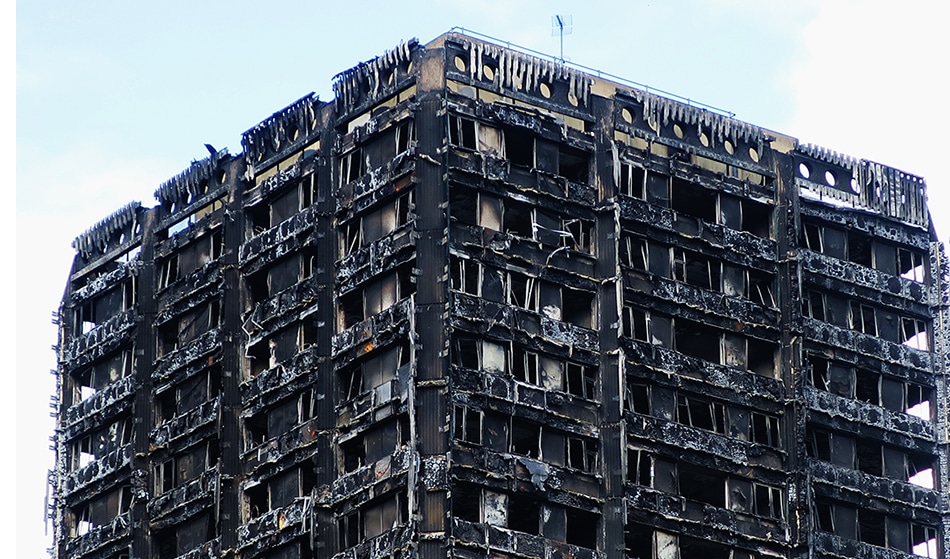
Alex Donohue / Shutterstock
A ban on flammable cladding similar to the material used in Grenfell Tower is not enough, says the Fire Brigades Union.
On 14 June 2017, a malfunctioning fridge-freezer on the fourth floor of Grenfell Tower caught fire. The fire spread quickly throughout the 24-storey building, killing at least 72 people. This rapid proliferation was attributed to the building’s exterior casing, which was comprised of an aluminium composite rainscreen cladding - a variety of material that is widely used in construction. The exterior cladding was supposed to improve the building’s external appearance and augment its heating and energy efficiency; instead it lit up like kindling and caused the building to burn and smolder for over 60 hours.
The Fire Brigades Union (FBU) has since called for an outright ban on combustible cladding. Instead, the Government has banned the use of plastics, wood and products – including combustible materials, such as aluminium composite material (ACM) panels – in external wall systems in residential buildings taller than 18 meters. The ban applies to cladding panels and insulation for all new buildings and those presently under construction, but will not be applied retrospectively to structures where the materials have already been fitted.
The Westminster government continues to allow cladding of limited combustibility for any building work in the future. The FBU called for a universal ban on these flammable materials
Matt Wrack, General Secretary, Fire Brigades Union
“These measures do not deal with the existing cladding on nearly 500 buildings across England where people live and work every day. The government’s proposals only apply to buildings over 18 meters high, plus hospitals, care homes and student accommodation, when they should apply to all buildings, whatever their height or use. They continue to allow A2 materials, when they should permit only the highest standard of A1”, explained the General Secretary.
Materials classed A1 under the European Reaction to Fire classification system include inorganic resources such metal, stone and glass, and are described as having no contribution to fire at any stage. A2 materials have limited combustibility, meaning they will not sustain a flame for more than 20 seconds, and are described as having no significant contribution to fire at any stage. This includes materials like plasterboard.
Following the Grenfell Tower tragedy, the government reported that 60 high-rise buildings from across 25 different local authorities had failed a combustibility test at the Building Research Establishment (BRE). The potential cost of replacing the cladding could reach up to £12bn, but work is already underway in many buildings managed by housing authorities or associations in England that fulfill the criteria of having failed fire safety tests and exceed the 18 meter limit. There are over 300 private sector residential buildings (hotels and student housing, for example) which are taller than 18 meters and have been identified as having ACM cladding that is unlikely to meet building regulations.
Fire safety and building materials are likely to remain sensitive but well-debated topics for the foreseeable future, and will no doubt be discussed in depth at the Fire Safety Summit at London Build 2018.
Disclaimer: The views expressed here are those of the author expressed in their private capacity and do not necessarily represent the views of AZoM.com Limited T/A AZoNetwork the owner and operator of this website. This disclaimer forms part of the Terms and conditions of use of this website.